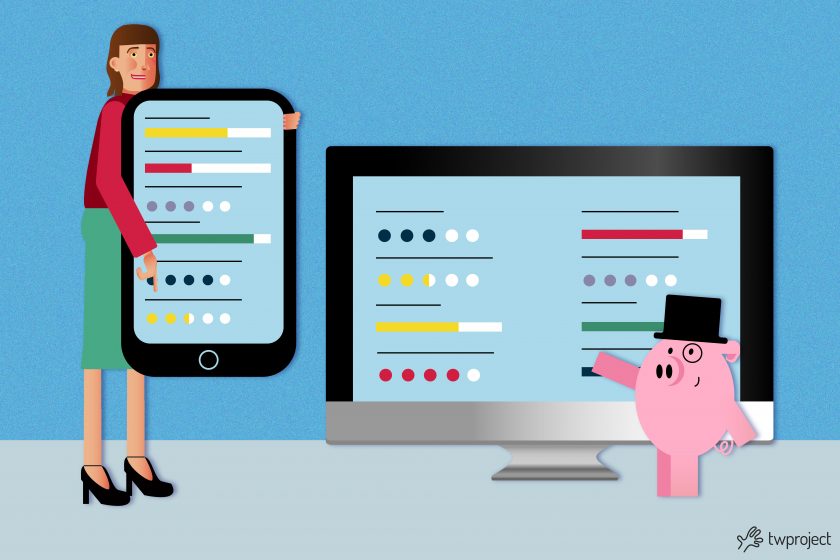The project scorecard is a key document that provides insight into the effectiveness of a project.
A well-defined evaluation framework helps analyze successes and failures, enabling informed decision-making regarding future initiatives.
A consistent evaluation method enables companies to improve accountability and transparency, promoting a culture of constant improvement.
CONTENT
What is project evaluation?
Project evaluation involves determining to what extent a project is achieving its goals.
This evaluation helps to determine whether the work should continue, whether it needs to be modified and whether the project should be stopped.
A good evaluation plan is formulated at the beginning of a project; here, the criteria that will be used to judge performance and success are outlined.
The evaluation criteria can include elements such as:
· Meeting deadlines and budgets: Were the goals and deadlines met? Was the project completed within the allotted budget?
· Output and expected results: Have the expected products, results, and benefits been achieved?
· Meeting the needs of stakeholders: Were customers, users, and other stakeholders satisfied with the project’s results?
· Achieving quality standards: Have the quality parameters and standards been defined and met?
· Proof of effectiveness: Did the project achieve its intended purpose?
What is a project scorecard?
The project scorecard provides a systematic approach to analyzing various aspects of a project, ensuring that all components are carefully examined.
With this framework in place, project managers can systematically measure results, identify areas for improvement, and align objectives with overall business goals.
A project scorecard should include five key elements.
These are:
1. Defining evaluation goals
Before starting the evaluation process, it is vital to define in detail which aspects of the project you want to analyze and why.
The evaluation objectives must be clear, measurable, and results-oriented; ideally, they should follow the SMART criteria (Specific, Measurable, Achievable, Relevant, and Time-bound). This makes it possible to focus on the most significant elements and collect data useful for understanding project performance.
Defining objectives ahead of time prevents misunderstandings and aligns expectations among all stakeholders involved. It also helps determine which indicators to use to evaluate success or failure from the outset.
Finally, every project needs a clear definition of the evaluation objectives to ensure a coherent and structured analysis helpful in learning lessons for the future.
2. Planning the evaluation
Having established your objectives, the next step is to plan in detail how the evaluation will be carried out. This is a crucial phase as it lays the operational foundations for the whole process and determines its effectiveness.
First, it is necessary to choose the most fitting evaluation method, which can vary depending on the nature of the project and the objectives identified. Some evaluations involve stringent quantitative approaches, while others favor qualitative tools such as interviews or focus groups. Often, a combination of both provides a more complete overview.
In this phase, the necessary resources are also identified, both in terms of tools and personnel involved: who will collect the data? Who will analyze it? What skills are required? It is important to clarify roles and responsibilities, so as to avoid overlaps or shortcomings during execution.
Part of the planning also involves creating a detailed timeline: defining due dates for each activity, milestones, and how preliminary results will be shared.
Another fundamental element concerns the involvement of stakeholders. It is advisable to gather their opinions and expectations right from the start to ensure that the evaluation considers all relevant perspectives. Openness and dialogue with internal and external stakeholders contribute to improving the quality of the evaluation process and strengthening its credibility.
Lastly, preparing standard tools and documentation (templates, checklists, data collection sheets) is helpful to ensure consistency and traceability. In short, planning the evaluation carefully means creating a solid structure that guides the following phases and allows you to obtain reliable and significant results.
3. Collecting data and information
Data collection is crucial but can be one of the most time-consuming stages in the evaluation process. The data collected should be both quantitative—such as schedules and costs —and qualitative—such as stakeholder satisfaction and team member feedback.
Data collection methods can include, but are not limited to, surveys, interviews, and document reviews. The key is to collect sufficient and relevant data that provides insight into the project’s performance.
4. Analyzing and summarizing data
After collecting all the information, a delicate and strategic phase begins: data analysis. This step doesn’t simply consist of looking at numbers or reading comments but requires structured reflection to transform raw data into meaningful insights.
The aim is to gain an extensive understanding of the project’s progress, identify its strengths and weaknesses, and assess the overall impact of the work carried out.
Analysis often involves searching for recurring patterns and trends. For example, you can examine performance in relation to timing, compare expected costs with actual costs, or observe the level of stakeholder satisfaction at different project stages.
These connections help answer fundamental questions: which elements contributed to success? Where were there significant deviations? Why did some activities not achieve the expected results?
In many cases, it is beneficial to triangulate the data – that is, to compare different sources and methods – to achieve a more robust and reliable picture.
Following the analysis, the information needs to be synthesized into a coherent and usable form. This means organizing the results into categories, constructing key performance indicators (KPIs), and selecting the most relevant data to include in the evaluation report.
A good summary not only clearly communicates the results but also creates a concrete basis for formulating effective recommendations and making informed decisions.
5. Reporting and recommendations
Following data analysis and synthesis, the final stage of the evaluation process consists of communicating the results and making concrete recommendations. This step is as strategic as it is operational: it ensures that what has been learned is shared, understood, and used to direct future decisions.
The evaluation report must be clear, organized, and accessible to all recipients, even those who did not directly participate in the project. It is good practice to structure the document into easily navigable sections, including:
- An executive brief of the main results
- A description of the context and objectives of the project
- Methods used for the evaluation
- Data collected and its interpretation
- A list of conclusions and recommendations
Here, it is important to separate descriptive observations from operational recommendations. The former are snapshots of what happened, while the latter are suggestions for corrective or improvement actions. Recommendations should be specific, realistic, and relevant so that they can be implemented without uncertainty.
The reporting phase is not limited to writing a report: it is just as important to organize opportunities for active sharing with the various stakeholders, like presentations, workshops, or feedback sessions. This promotes the adoption of recommendations, stimulates collective reflection, and reinforces the evaluation culture within the organization.
Finally, a good evaluation doesn’t end with the report’s delivery: it becomes a starting point for learning and continuous improvement. Documenting and archiving the information collected allows you to build a reference history for each future project, making the evaluation an evolutionary tool rather than just a retrospective one.
Create your project scorecard with Twproject
Effective project management is not limited to planning and execution; it is also crucial to assess the results obtained in a structured and objective way.
Creating a project scorecard is valuable for analyzing performance, identifying critical issues, and improving future processes.
Twproject, one of the most advanced project management software on the market, offers all the tools you need to create a personalized evaluation form that integrates real data from each activity.
With Twproject, this data is available in real-time and can be easily aggregated thanks to customizable reports and dynamic dashboards.
Moreover, you can attach documents, include comments visible to the whole team, and highlight milestones achieved.
As we have discussed in this article, a well-structured evaluation form is also a powerful learning tool: it allows you to focus on what worked, what can be improved, and how to optimize the management of future projects.
The data collected can be used to refine estimates in later projects, improve resource allocation, and minimize risks.
A project scorecard is also an effective communication tool with stakeholders, who can clearly see how the work is progressing.
Creating a project scorecard with Twproject means transforming project work into a solid foundation for evolving and achieving ever-better results.




